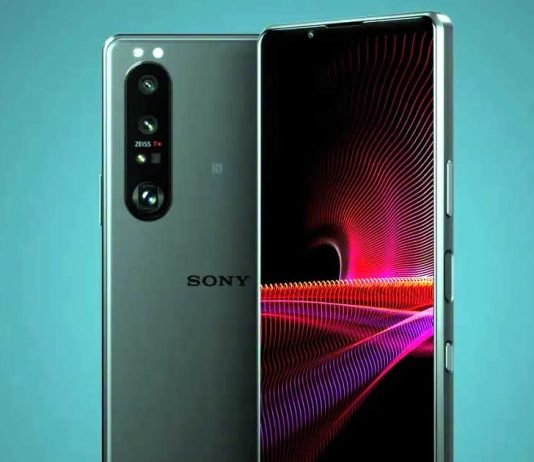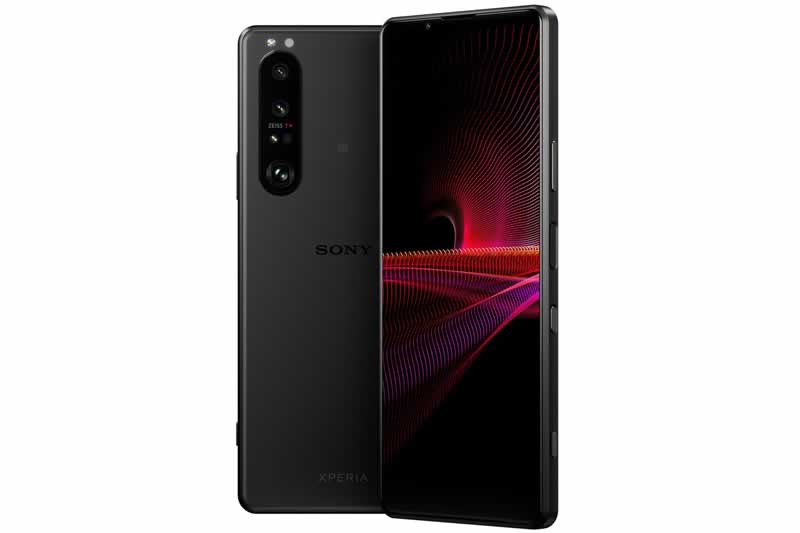With the three new smartphones Xperia 1 III, Xperia 5 III, and Xperia 10 III, Sony presents its new portfolio from middle to upper class. As with its predecessors, the focus is again on multimedia consumption and the camera — the new premium smartphones come with a variable aperture for two focal lengths with one sensor.
Sony explains that with the new Xperia, it wants to “jump to the next level”, an ambitious challenge for which it arrives with the argument of mounting for the first time on a smartphone a telephoto lens with variable focal length, a 4K HDR screen at 120 Hz and offers sound in 360 Reality Audio.
Sony Xperia 1 III and Sony Xperia 5 III
Both Xperia 1 III and Xperia 5 III are designed to be robust and differ from the rest of the alternatives on the market, both in their 21:9 aspect ratio and in a very characteristic design.
The Xperia 1 III is positioned as the most advanced phone of the brand. It is the largest, has a higher resolution screen and an extra sensor in the rear photo module. The Xperia 5 III, on the other hand, tries to offer the same philosophy as the Xperia 1 III, but in a smaller body. The idea of the brand, therefore, is to make available to consumers two products with the same ideology but in different sizes.
The Xperia 1 III combines high-quality materials ranging from frosted glass on the back to the polished metal frame with Corning Gorilla Glass Victus on the screen. The Xperia 5 III for its part is the compact high-end that comes with Gorilla Glass 6 on the back and the screen while opting for an elegant glass mirror finish and also a metal frame. Both have IP65/68 water resistance and dust protection despite coming with a headphone output.
The main claim of the Xperia 1 III and Xperia 5 III is its camera. Sony continues on the path of converging its mobile phones with its reputed Alpha cameras. Both smartphones have been developed jointly with the engineers of the Alpha series cameras and where the main claim is the new telephoto lens that both devices mount.
The smartphones comes with the first variable mobile telephoto lens combined with a dual PD sensor that achieves a focal length of 105 mm, complemented by fast autofocus thanks to its dual PDAF sensor. By switching between 70mm and 105mm, focus is adjusted in an instant to quickly capture every detail.
In total, the combination of three 12-megapixel lenses makes it possible to have cameras with focal lengths of 16 mm, 24 mm, 70 mm, and 105 mm on the phone, a versatility with which Sony seeks to make its smartphones the perfect pocket camera. So much so that both models continue to bet on a physical button as a trigger and present Zeiss optics calibrated specifically for them.
The next generation of Xperia incorporates a super-resolution zoom with AI. This technology uses the company’s artificial intelligence processing to restore detail and sharpness to images, ensuring that accuracy.
Both include fast and accurate continuous autofocus on all lenses with a real-time focus on the eye. In addition, we can find a very precise object tracking system in both phones, however, in the Xperia 1 III, it presents a more sophisticated set of functions.
Additionally, both models offer continuous AF that performs AF/AE calculations 60 times per second, allowing you to shoot and store 20 shots (20 fps) with high precision, precise focus, and optimized exposure.
In addition to the camera, both the Xperia 1 III and the Xperia 5 III come to rely on everything that their screen returns a cinema experience — realistic, vivid, accurate images with the best possible resolution.
In addition to the size of the screen (6.5 inches of the Xperia 1 III versus the 6.1 inches of the Xperia 5 III), we find differences in the quality of the panels, reaching a 4K resolution in the larger model. Specifically, in the Xperia 1 III, we have a 4K HDR OLED panel at 120 Hz, while in its younger brother, we have an OLED FHD HDR panel, also at 120 Hz.
Beyond Dolby Atmos, the Xperia 1 III and Xperia 5 III are the world’s first phones to play 360 Reality Audio on their speakers. Also, if the music source you are listening to is a 2-channel stereo, the new 360 Spatial Sound comes into play. It enables the Xperia 1 III and Xperia 5 III to mix stereo tracks and virtualize them into an immersive, real-time sound experience.
Both have the latest Qualcomm processor, the Snapdragon 888. Of course, we will have different variances in terms of RAM and storage. While the Xperia 1 III will have 12 GB of RAM and 256 or 512 GB of storage, the Xperia 5 III will have 8 GB of RAM and 128 or 256 of capacity.
Both of these Xperia premium smartphones complemented by a 240hz touch screen response reduced latency and screen optimization to make gaming smoother and more comfortable.
Regarding the battery, both mount 4,500 mAh with a 30W fast charge that allows the terminal to be charged from 0 to 50% in 30 minutes. In addition, they have Xperia Adaptive Charging technology designed to extend the life of the component. Of course, the Xperia 1 III will be the only one that has wireless charging capacity as well as the function of sharing battery with other devices.
Sony Xperia 10 III
Beyond its two new high-end ranges, Sony has also launched another phone with a more contained price and features with the idea of reaching a larger audience. Of course, it is the first time that its 10 series comes with 5G.
The Xperia 10 III is a mid-range with a Qualcomm Snapdragon 690 processor, 6GB of RAM, 128GB of storage, and a considerably more modest camera composition than its bigger siblings. Specifically, we have three lenses that are equivalent to 16 mm, 27 mm, and 54 mm, while on the front, we will have an 8-megapixel camera.
Sony does magic on the camera here too. We have a careful HDR, 4K recording, an image processing inherited from his photographic knowledge as well as burst mode shooting at 10 fps or animal recognition that allows us to identify pets as the subject of the image and apply a portrait effect.
With regard to design, it is the smallest of the three. Its design remains as recognizable as its older brothers with a 21:9 distribution, which has a 6-inch OLED FHD + screen with HDR support. Likewise, it also has a 4,500 mAh output and IP65/68 resistance.
At the moment, the price and specific availability are unknown, and Sony will announce it later. The only concrete thing is that they will arrive at the beginning of summer.

